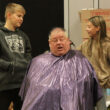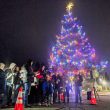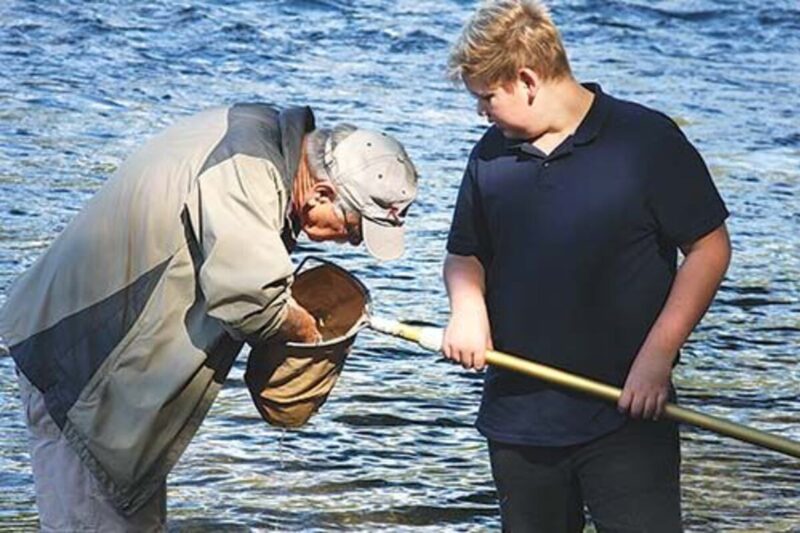Sean C. Morgan
Some 450 sixth-grade students from Lebanon and Sweet Home are spending time at Northside Park this month learning about salmon and their habitat.
“This is one of 10 field trips,” said Angela Clegg, coordinator with the South Santiam Youth Watershed Council Friday as about 60 Sweet Home students from Holley Elementary and the Sweet Home Charter School spent the day at the park on the shore of the South Santiam River.
During the Salmon Watch field trips, the students visit four stations covering four subject areas: fish biology, water quality, macro invertebrates and riparian ecology.
Each station is staffed by volunteers, who include local high school students from the Youth Watershed Council.
The Salmon Watch field trips are educational, Clegg said. “We do this at this time of year because the salmon are running.”
They hope to catch sight of salmon in the river, she said, but they hadn’t seen any as of Friday. The past two weeks, Clegg led six field trips. She’ll lead four this week.
During the field trip, the students learn about salmon and how important they are as a keystone species, Clegg said. A keystone species is one on which other species in an ecosystem largely depend and, according to scientists, if it were removed the ecosystem would change drastically.
The four stations are designed to explain how salmon survive and live.
At the macro invertebrates station, students collected insects, which can be divided into three categories based on their tolerance to pollution, including tolerant, neutral and intolerant.
The insects can show how healthy the insects are for the fish and how good the water quality is based on what insects they find, Clegg said. In a classroom they can compare what they find with locations around the region.
Ideally, among species, they’ll find mayflies, stoneflies, caddisflies and dragonflies, Clegg said.
At the riparian ecology station, “they’ll look at canopy shade,” Clegg said. They’ll use a densiometer to measure canopy cover.
“They’ll look at the geology, the rocks, the substrate,” Clegg said, and they talk about what trees and shrubs are important and how the riparian area functions as a filter for runoff from rainstorms.
At the fish biology station, they learn about the fish itself, why it goes to the ocean and how it is able to move from fresh to salt water, Clegg said. Under the guidance of a fish biologist, they also examine fish specimens.
At the water quality station, they take samples of water, looking for dissolved oxygen, turbidity, air temperature, water temperature and pH levels, Clegg said.
Salmon Watch field trips are under way across the valley right now, Clegg said. Albany and Central Linn are conducting field trips at Waterloo County Park. Corvallis students are taking field trips at Clemens Park along the Alsea River near Alsea.





